Local News
Mystery of why $725,000 donation to the Simkin Centre was made is likely solved
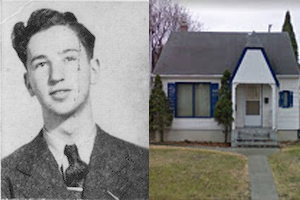
By BERNIE BELLAN
Readers of this website may recall our story posted a couple weeks ago in which we told about a $725,000 donation that was given to the Simkin Centre by something called the Myer and Corrine Geller Trust.
The donation – which was actually made out to the Sharon Home, was in the form of a $575,000 US cheque. It arrived in August of this year. The only information that the Simkin Centre had about the source of the cheque was that Myer Geller had graduated from St. John’s Tech in 1943, that he went to MIT, became a physicist, and that he was granted several patents.
With that scant information – and with the help of several other individuals, including several readers of this paper, especially Ed Feuer, and someone by the name of Christian Cassidy who read my story about the Gellers on our website and who went to extraordinary lengths to piece together the Geller family history on a blog known as “West End Dumplings”, we were able to amass quite a few details about Myer Geller and his family. Eventually we were led to the conclusion that Myer Geller’s mother, Sarah, must have been a resident of the Sharon Home until her death in 1984.
Based on information available on a variety of websites, including the Jewish Heritage Centre of Western Canada’s archives, Ancestry.ca, Truthfinder.com, Newspaper-archive.ca, and in the Winnipeg Henderson Directory of 1965, along with the St. John’s yearbook of 1943 (that was loaned to us by a reader who had it in his possession, but asked us not to reveal his name), along with information provided by Christian Cassidy, here is what we found:
Myer Geller was born in 1926 (which we reported in the Oct. 28 issue). His parents were Max and Sarah. Max Geller was born in 1887 and died in 1966. Sarah Geller (whose maiden name was Feldman) was born in 1893 and died in 1984. The Gellers were married in 1916 in Winnipeg.
The following is taken from Christian Cassidy’s blog, the “Western Dumpling”: “The earliest mention I can find of the Geller family comes in the 1921 Census of Canada. It shows Max Geller, 30, wife Sarah, 24, and eldest child, Rose, 3, renting a room at 689 Selkirk Avenue, the home of the Peck family.
“The census taker noted that the parents were Jewish and had emigrated from Russia, Sarah in 1912 and Max in 1913. Rose was born in Manitoba ca. 1918.
“Max’s profession is listed as a merchant of produce and eggs.”

The blog also noted that Frances Geller was born in 1922.
At the time that Myer Geller would have gone to St. John’s Tech the Geller family lived at 284 Bannerman Avenue.
Again, according to Christian Cassidy, “Max Geller’s entry in the 1942 Henderson Directory lists him as a travelling salesman. From 1943 to 1945, he is a produce manager. No place of work is ever given.
“In 1946, Max gets into the fur industry as an employee of Elias Reich and Co. fur manufactures located on the 6th floor of the Jacob Crowley Building. He worked there and for its successor, J. H. Hecht, until 1948.
“In 1949 and 1950, Max’s occupation is listed as a “tracker” – no explanation of the job title or a place of work was given.”
Both Rose and Frances Geller married and lived in Toronto. Rose married someone named Louis Lieberman, while Frances married someone named Edward Jordan. We were not able to find any further references to either of the sisters once they left Winnipeg, although we did confirm that Louis Lieberman has died.
We did learn though that Myer Geller did have an illustrious career. Following his graduation from St. John’s Tech, he went to the University of Manitoba, then the University of Minnesota, where he obtained a master’s degree in physics. Evidently he returned to Manitoba for at least a short while because we were able to learn that he crossed into the United States in 1949, became an American citizen in 1950, then went to MIT from 1951-55, from where he obtained his PhD in physics.
Myer Geller married Corrine Taper in 1954 in New York. The Gellers lived at various times in New York, Pennsylvania, and finally California. As we also noted in our Oct. 28 story, Myer Geller’s name was associated with 15 different patents.
We learned that for at least a period of his life Myer Geller worked for a branch of the US Navy known as NOSC (Naval Operations Support Centre). With the help of a genealogist friend of former Winnipeggers Carol and Chuck Faiman we also learned this about Myer Geller: “in 1960 or 1961 he moved from a job at Hughes Products to be a senior scientist at the Solid State Division of Electro-Optical Systems in Pasadena, CA.”
In 1966 the Gellers moved to San Diego, which is where they lived until they both died, Myer in 2016, and Corrine in 2019. They did not have any children.
Here is the final information we were able to learn about Myer Geller’s parents:
Max and Sarah Geller eventually moved to a small apartment at 206 Perth Avenue, although whether they lived somewhere else after Bannerman is not clear. The 1965 Henderson Directory lists his occupation as a parking lot attendant. Max died in 1966 in St. Boniface Hospital.
Now, at this point what I’m writing is pure speculation: Sarah Geller likely remained in Winnipeg. When she died in 1984 she was buried in Rosh Pina Cemetery alongside her husband. Her children all lived in different cities – a situation which is quite familiar to so many of us. We cannot absolutely confirm that Mrs. Geller remained in Winnipeg, but here is what we speculate: A woman who would have been 73 when her husband died, and with no visible means of support, living in a very modest apartment, would likely have been dependent upon her children for support.
And where did individuals in that position usually end up? The evidence would seem to point to the Sharon Home, at 146 Magnus Avenue. Here we have an elderly widow with at least one of her children earning what must have been a very good income. (The Myer and Corrine Geller Trust eventually donated over $7 million Cdn, altogether, of which the donation to the Sharon Home/Simkin Centre was only 11% of the total amount donated.)
The likelihood is that Sarah Geller ended her days at the Sharon Home; hence the huge donation made to the Sharon Home.
Although we are told that the Simkin Centre did do a search in order to try to determine the basis for the donation they received from the Geller Trust, until now there would have been very scant information upon which an investigation could have proceeded.
We are not certain whether it will be possible to find records that would prove Sarah Geller was a resident there, but according to Shelly Faintuch, daughter of the late Dr. Henry Faintuch, who was executive director of the Sharon Home for many years, her father kept meticulous records of all residents in the home. If those records still exist, they should answer the question whether Sarah Geller did indeed live in the Sharon Home. In the meantime though, we are told the Simkin Centre is preoccupied with other matters, i.e., dealing with the COVID pandemic, and so it is quite understandable that any search for records that might show that Sarah Geller lived at the Sharon Home will have to be put off until the emergency situation has abated.
By no means do we want to indicate that the mystery is conclusively solved; we merely want to show that the trail of evidence which has emerged has led in a direction that could reasonably lead one to conclude why Myer Geller would have wanted to make such a large donation to the Sharon Home.
Local News
New Israeli restaurant opens in River Heights

By BERNIE BELLAN (July 6, 2025) It’s been a long time since our community has been able to welcome the opening of a restaurant that specializes in Israeli food.
That void is now going to be filled with the opening of The Green Falafel, at 1833 Grant (corner of Centennial – next to the Subway).

The restaurant is the fulfillment of a dream long held by the husband and wife team of Ariel and Eden Maudi, who have been living in Winnipeg the past 11 years.
Ariel, who was born in Israel and grew up in Beer Sheva, says that he worked in telecommunications in Ramat Gan for several years. He adds though that he had always dreamed of owning his own falafel stand in Israel, but life was difficult there and he decided to come to Canada as a tourist to see whether there were any opportunities here for him, Eden and their two young children.
Eden, who was born in Russia and moved to Israel with her family in 1996, stayed behind with the two kids, who were both pre-schoolers, while Ariel tested the waters in Canada first.
Ariel says he came to Canada as a tourist in 2013. His first stop was in Toronto, where he acquired his 1st class driver’s license. At the end of 2013 he moved to Winnipeg where he began working as a truck driver. Soon he found himself employed as a successful sales person at Vickar Nissan where, he says, he once achieved the status as the top car sales person in Canada. After working at Vickar Nissan for a number of years, Ariel began working as an installer for Bell MTS.
Meanwhile, Eden began working at a Walmart, later at the Costco on Regent.
But, when the opportunity to move into a space that had been previously occupied by another restaurant, but which had closed, became available, Ariel and Eden decided to open their own Israeli restaurant in an area that hadn’t seen Israeli food served since the controversial closure of Bermax Café in 2019.
The Maudis say that they will be serving a variety of Israeli dishes – all vegetarian, and that they will be fully kosher.
The “green” in Green Falafel, by the way, Ariel Maudi explains, comes from the cilantro and parsley that are added to the chickpeas. In addition, their pitas will be coming from Israel and will be baked fresh daily.
The Green Falafel will be open from 10-8 daily. Delivery will be available through Uber Eats and DoorDash.
Call 204-557-7837 for information.
Local News
Previews of shows with Jewish performers at this year’s Fringe Festival July 16-27
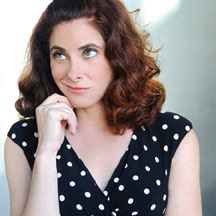
For show dates and venues go to winnipegfringe.com
By BERNIE BELLAN As has been our custom for many years now we try to find shows that have either Jewish performers or themes that would have particular appeal for Jewish audiences. Many of the Jewish performers at this year’s festival have been here before, but several are new. In no particular order here are blurbs about the shows we’ve found that fit the criteria I’ve just described. (By they way, if we’ve omitted a show that should be included in our list there’s plenty of time to get added to this post. Just drop me a line at jewishp@mymts.net.)

You’ve Been Served: A One-Woman Show About Divorce, Cults, and Coming of Age at Midlife
Noemi Zeigler
You are hereby summoned… to laugh, cry, and maybe belt out a Streisand number in solidarity. You’ve Been Served is a raw and riotous solo comedy by writer-performer Noemi Zeigler. It all begins when Noemi is served divorce papers on top of a garbage bin lid while taking out the trash—an undignified start to a full-blown midlife unraveling.
At 50, still clinging to her dream of becoming a singer, she falls under the spell of a music producer slash self-help guru, joins a spiritual cult, and, instead of landing a record deal, she lands in jail. Behind bars, with help from her long-buried inner child, she begins to reclaim her voice and her power. Turns out, dreams really do come true—just not the way she expected.
The show features vividly drawn characters—including a manipulative cult leader, a toxic ex-husband, and a jail guard named Roach who shares Noemi’s obsession with the fashion of Charlie’s Angels (the ‘70s TV version, of course.)
With salsa dancing, twerking, and a belting rendition of Don’t Rain on My Parade, Zeigler dives into abandonment, reinvention, and self-rescue. As she confronts perimenopause, she discovers it’s not the end—it’s the new puberty. The show touches on grief, sexuality, and spiritual confusion, but Noemi’s childlike optimism asks: What if your breakdown is actually your breakthrough?

You’re good for nothing… I’ll milk the cow myself
Written & Performed by Natacha Ruck
France, 1981: The first socialist president is about to be elected and young Natacha is ready to implement her own political platform. But first, she has to take down the schoolyard bully,emasculate the rules of French grammar and make off with grandmother’s chocolate.
If you think you know the limits of Jewish mothers, evil grandmothers and transcontinental lovers, meet Natacha Ruck’s family. This true tale of three generations of women, facing three world wars, is equal parts hilarious, shocking and zany.

A One Human Being, Potentially Comedic Performance of Beauty and the Beast NEW WORK!
Written & Performed by Alli Perlov
Be our guest! Local high school drama teacher Alli Perlov is back for a tale as old as time. Can she sing? Not really. Can she act? That’s debatable. Will you laugh? Oh… probably.
Perlov plays dozens of characters, some human, some animal, and many objects, in a comedic exploration of Beauty and the Beast.
In an homage to this brilliant musical adventure, through witty commentary and unstoppable energy, Perlov aims to entertain an audience that isn’t forced to be there like her students.

Hockey Sticks and Beaver Pie
Written & Performed by Melanie Gall
Take a trip around Manitoba. From the 30,000 ft. St. Adolphe snow maze to the Narcisse snake dens! After all, where else holds both the title of Slurpee Capital of the World and the Guinness Record for the most people simultaneously howling like wolves?
Deanna Durbin, Terry Jacks and Burton Cummings are among the many homegrown stars, and Hockey Sticks features their music along with original songs and the stories that make this province unique.
Starring Melanie Gall from past shows Piaf & Brel, Ingenue and Toast to Prohibition
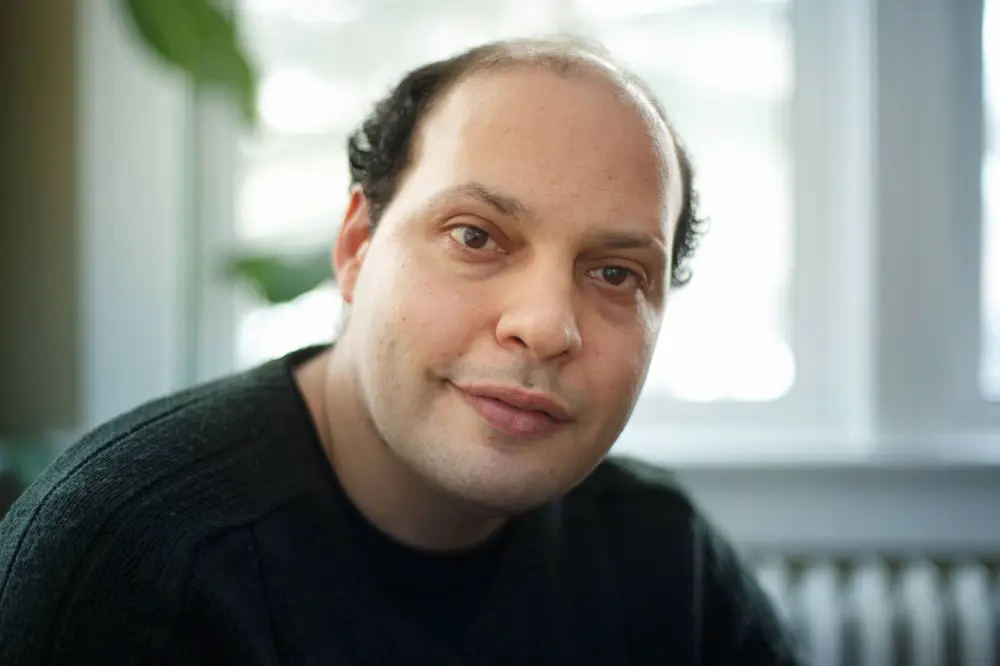
Nerohilarity Exposed
Produced by Adam Schwartz
We all sometimes feel exposed, whether that’s as a fraud or a pretender.
The performers of the award-winning Neurohilarity show, Danielle Kayahara (Laugh Out Loud CBC), Carole Cunningham (Yuk Yuks, The Debaters), Adam Schwartz (Winnipeg Fringe) and Rollin Penner (Yuk Yuks, CBC, Rumors, Winnipeg Comedy Festival), apply a comedic spin to the experiences that make us feel insecure, stripping away the emotional weight with nittygritty jokes and stories that will have you laughing uproariously.
Brilliantly awkward.
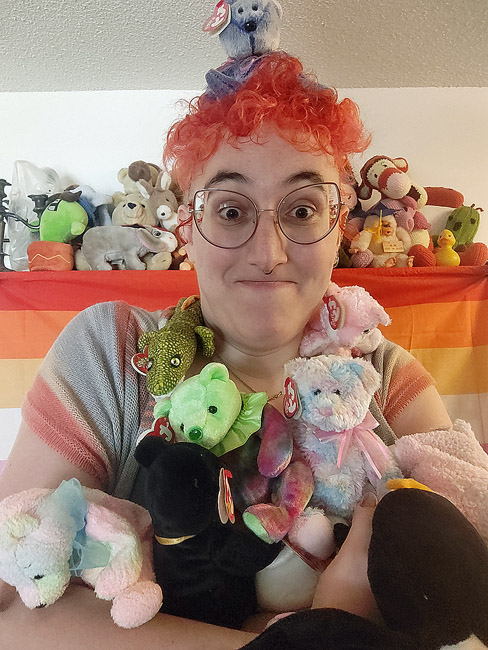
A Lesbian in the Kitchen
Willow Rosenberg
Professional lesbian Willow Rosenberg takes you on a journey through the centuries, superstitions and tablespoons of her lifelong passion for baking in this spiritual successor to 2024’s Jenny Award-nominated A Lesbian in a Bear Store.
Whether you have a favourite spatula, bake once or twice a year, or live in constant fear of being told to “just fold it in”, this one-woman show about family, joy, tradition (but make it gay),
Judaism, comfort, home (but make it gayer*), love, chemistry and magic is for you!
*Who’re we kidding, it’s all gay!

Eleanor’s Story: An American Girl in Hitler’s Germany
Written & Performed by Ingrid Garner
(Ed. note: Although Ingrid Garner isn’t Jewish, we thought the theme of this show might have a special appeal for Jewish readers.)
Based on Eleanor Ramrath Garner’s best-selling memoir, this 16x internationally award-winning adaptation – performed by her granddaughter, Ingrid Garner – details Eleanor’s youth as an American caught in Second World War Berlin.
Punctuated with humour and accompanied by cinematic sound and video, Garner embodies her ancestors in this coming-of-age odyssey, delivering an account of war that is more relevant than ever.

Reviewing The Free Press 2
Benji Rothman
The Winnipeg Free Press has run amok, reviewing each and every Fringe show over the past two decades without consequence or recourse. Now, it’s their turn… again.
In this refurbished work that debuted at last year’s Winnipeg Fringe, Benji Rothman once again takes the Winnipeg Free Press to task. In this (mostly) new, (hopefully) hilarious 45-minute show, Rothman dives deep into their past and exposes their faulty journalism, imbalanced reporting and, of course, embarrassing typos.
Local News
Jewish performers at this year’s Winnipeg Folk Festival July 10-13

The Black Sea Station
Long ago, there were the klezmorim, itinerant musicians who roamed the back streets of Eastern Europe, playing at parties for meals and a few coins. The sound they honed then was a visceral exploration of life’s joy, and its loss; they could whip audiences into a frenzy of dancing, or bring them to tears with the mournful wail of a clarinet. Today, Winnipeg’s own The Black Sea Station is carrying on this tradition. Featuring Daniel Koulack (bass), Victor Schultz (violin) and Myron Schultz (clarinet) — cofounders of seminal local klezmer act Finjan — along with Moldovan accordion wizard Nikolai Prisacar and multi-instrumentalist Ben Mink, the quintet transports listeners to a time and place long past. Through a mix of original songs rooted in history, and traditional tunes spun up with modern zest, they whirl through the exuberant klezmer sounds of their Eastern European heritage, tending the old ways with deep love and respect.
The Black Sea Station will be performing Sunday, July 13, at 1:00 pm in Snowberry Field.
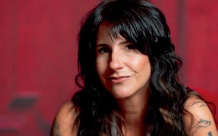
Romi Mayes
Romi Mayes has taken some hard knocks in her life, but she’s never faded away. For more than 25 years, Manitoba’s first lady of blues-rock has been a lynchpin of the Canadian roots scene. She earned that position the old-fashioned way, through her gritty, passionately emotive music. With her sizzling guitars and full-throated rasp, the Juno-nominated performer howls and purrs through razor-edged lyrics, rocking out wherever she can find a stage. She’s long been one of the hardest-working musicians on the circuit, keeping a busy slate of gigs and mentoring up-and-coming artists to get a foothold on the trails she blazed. Now, after a nine-year hiatus from the studio, Mayes has put her scintillating sound back on record with her long-awaited seventh album, Small Victories — a return that leaves no doubt, no matter the ups and downs, Mayes is here to stay.
Romi will be performing Friday, July 11, at 1:00 pm in Burr Oak.
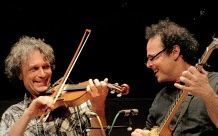
Leonard Podolak (with Matt Gordon)
Ireland’s Matt Gordon is a fiddler and singer, whose fleet-footed clogging and thigh-slapping hambone has taken stages by storm since the 1980s. Leonard Podolak is a virtuosic master of the clawhammer banjo, who for decades has whipped up some of Manitoba’s wildest roots parties with his band, The Duhks. Put those talents together, and they can promise you this much: we’re all gonna have a real good time. Longtime friends and musical collaborators, Gordon and Podolak deliver an exhilarating trip through old-time Appalachian music. Their performances seamlessly blend intricate instrumental lines with heartfelt singing and dazzling dance. They’ve teamed up on a few records over the years, including 2020’s bigband extravaganza Power Wagon: Live At Shanley’s. But the best way to experience this duo’s toe-tapping, hand-clapping chemistry is to see it live.
Podolak and Gordon will be performing A concert with a side of clogging Sunday, July 13, at 3:00 pm in Folk School.
